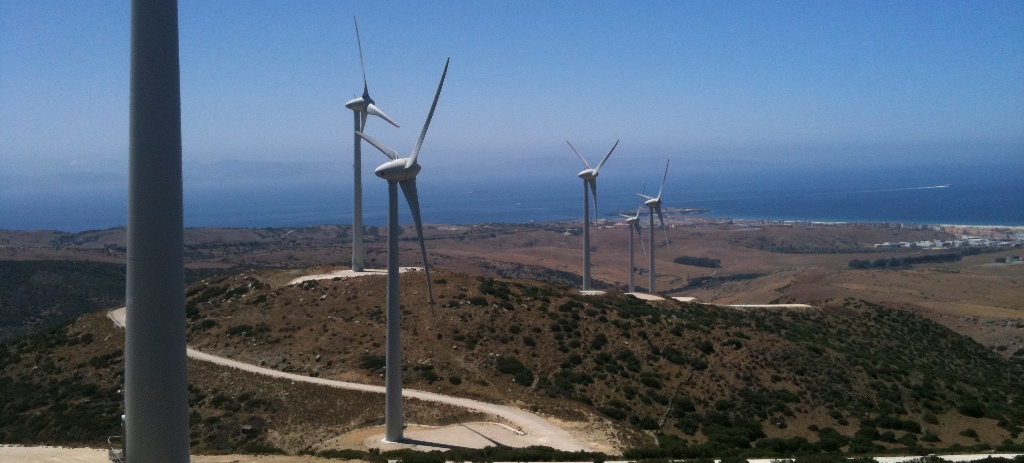Modeling the Interaction of Terrain and Wind to Quantify High-Risk Conditions for Griffon Vultures at Wind Farms
Eurasian griffon vultures (Gyps fulvus) are one of several species of raptors known to be susceptible to collisions with wind turbines (Barrios & Rodriguez, 2004; Lekuona & Ursua, 2007). Although griffons are clearly masters of the air, they are large heavy birds, and because they may use updrafts within wind farms for lift, they are sometimes struck by the turbine blades. Several recent papers have highlighted the importance of understanding the interaction of wind and topography for better prediction of collision risk to raptors (Barrios & Rodriguez, 2004; Hoover & Morrison, 2005; Madders & Whitfield, 2006).
In this multidisciplinary project we are investigating the correlation between updrafts and griffon vulture flight behavior and collisions as a function of terrain, wind speed, and wind direction. We are focused on two operating wind farms near Tarifa, at the southern tip of Spain. This is an area where hundreds of thousands of raptors, storks, and other birds migrate each fall and spring between Europe and Africa, and there are also many year-round resident raptors. Our goal is to test the hypothesis of Barrios & Rodriguez by comparing the locations/conditions where most collisions have occurred with model predictions of updraft strength. We are hopeful that the model can be used to predict where turbines can be constructed with minimal risk to griffon vultures and other soaring birds.
Collaborators:
Luis Barrios, former technical director of Fundación Migres, Tarifa, Spain
Alejandro Rodriguez, Dept of Conservation Biology, Estación Biológica de Doñana, Sevilla, Spain

